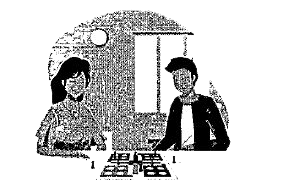Sherlin and Danju are playing Ludo at home during Covid-19. While rolling the dice, Sherlin's sigter Raji observed and noted the possible outcomes of the throw every time belongs to set {1, 2, 3, 4, 5, 6). Let A be the set of players while B be the set of all possible outcomes.

Let R be a relation on B defined by R={(1,2),(2,2),(1,3),(3,4),(3,1),(4,3),(5,5)}. Then R is:
Symmetric
Reflexive
Transitive
None of these three
The correct Answer is:D
Related Playlists
- BOOK - ICSECHAPTER - RELATIONS AND FUNCTIONS EXERCISE - MULTIPLE CHOICE QUESTIONS (ASSERTION AND REASON BASED QUESTIONS)7videos
RELATIONS AND FUNCTIONS
- BOOK - ICSECHAPTER - QUESTION PAPER-2018EXERCISE - Section -C8videos
QUESTION PAPER-2018
- BOOK - ICSECHAPTER - SAMPLE PAPER - 4 EXERCISE - Questions (Section C)8videos
SAMPLE PAPER - 4
Similar Practice Problems
- Question 1 - Select One
Let S be set of all numbers and let R be a relation on S defined by aRb⇔a2+b2=1 then, R is
Asymmetric and transitive but not reflexiveBReflexive and symmetric but transitiveCReflexive and transitive but not symmetricDNone of these - Question 1 - Select One
Let S be the set of all real number and let R be relation on S , defined by
aRb⇔(1+ab)>0 then, R isAReflexive and symmetric but transitiveBReflexive and transitive but not symmetricCsymmetric and transitive but not reflexiveDNone of these - Question 1 - Select One
Let Z be the set of all integers and let R be a relation on Z defined by a R b ⇒a≥b. then R is
Asymmetric and transitive but not reflexiveBReflexive and symmetric but transitiveCReflexive and transitive but not symmetricDAn equivalence relation - Question 1 - Select One
Let Z be the set of all integers and let R be a relation on Z defined by aRb⇒a≥b. then R is
Asymmetric and transitive but not reflexiveBReflexive and symmetric but not transitiveCReflexive and transitive but not symmetricDAn equivalence relation - Question 1 - Select One
Set of all possible outcomes of an experiment is called its
Auniversal setBsample spaceCpartitionDdomain
Similar Questions
Sherlin and Danju are playing Ludo at home during Covid-19. While rolling the dice, Sherlin’s sister Raji observed and noted the possible outcomes of the throw every time belongs to set {1,2,3,4,5,6}. Let A be the set of players while B be the set of all possible outcomes.

A = {S, D}, B = {1,2,3,4,5,6}
Let R be a relation on B defined by R = {(1,2), (2,2), (1,3), (3,4), (3,1), (4,3), (5,5)}. Then R isView SolutionSherlin and Danju are playing Ludo at home during Covid-19. While rolling the dice, Sherlin’s sister Raji observed and noted the possible outcomes of the throw every time belongs to set {1,2,3,4,5,6}. Let A be the set of players while B be the set of all possible outcomes.

A = {S, D}, B = {1,2,3,4,5,6}
Let R:B→B be defined by R={(1,1),(1,2), (2,2), (3,3), (4,4), (5,5),(6,6)}, then R isView SolutionSherlin and Danju are playing Ludo at home during Covid-19. While rolling the dice, Sherlin’s sister Raji observed and noted the possible outcomes of the throw every time belongs to set {1,2,3,4,5,6}. Let A be the set of players while B be the set of all possible outcomes.

A = {S, D}, B = {1,2,3,4,5,6}
Let R:B→B be defined by R={(x,y):y in divisible by x} isView SolutionSherlin and Danju are playing Ludo at home during Covid-19. While rolling the dice, Sherlin’s sister Raji observed and noted the possible outcomes of the throw every time belongs to set {1,2,3,4,5,6}. Let A be the set of players while B be the set of all possible outcomes.

A = {S, D}, B = {1,2,3,4,5,6}
Raji wants to know the number of relations possible from A to B. How many numbers of relations are possible?View SolutionSherlin and Danju are playing Ludo at home during Covid-19. While rolling the dice, Sherlin’s sister Raji observed and noted the possible outcomes of the throw every time belongs to set {1,2,3,4,5,6}. Let A be the set of players while B be the set of all possible outcomes.

A = {S, D}, B = {1,2,3,4,5,6}
Raji wants to know the number of functions from A to B. How many number of functions are possible?View Solution

